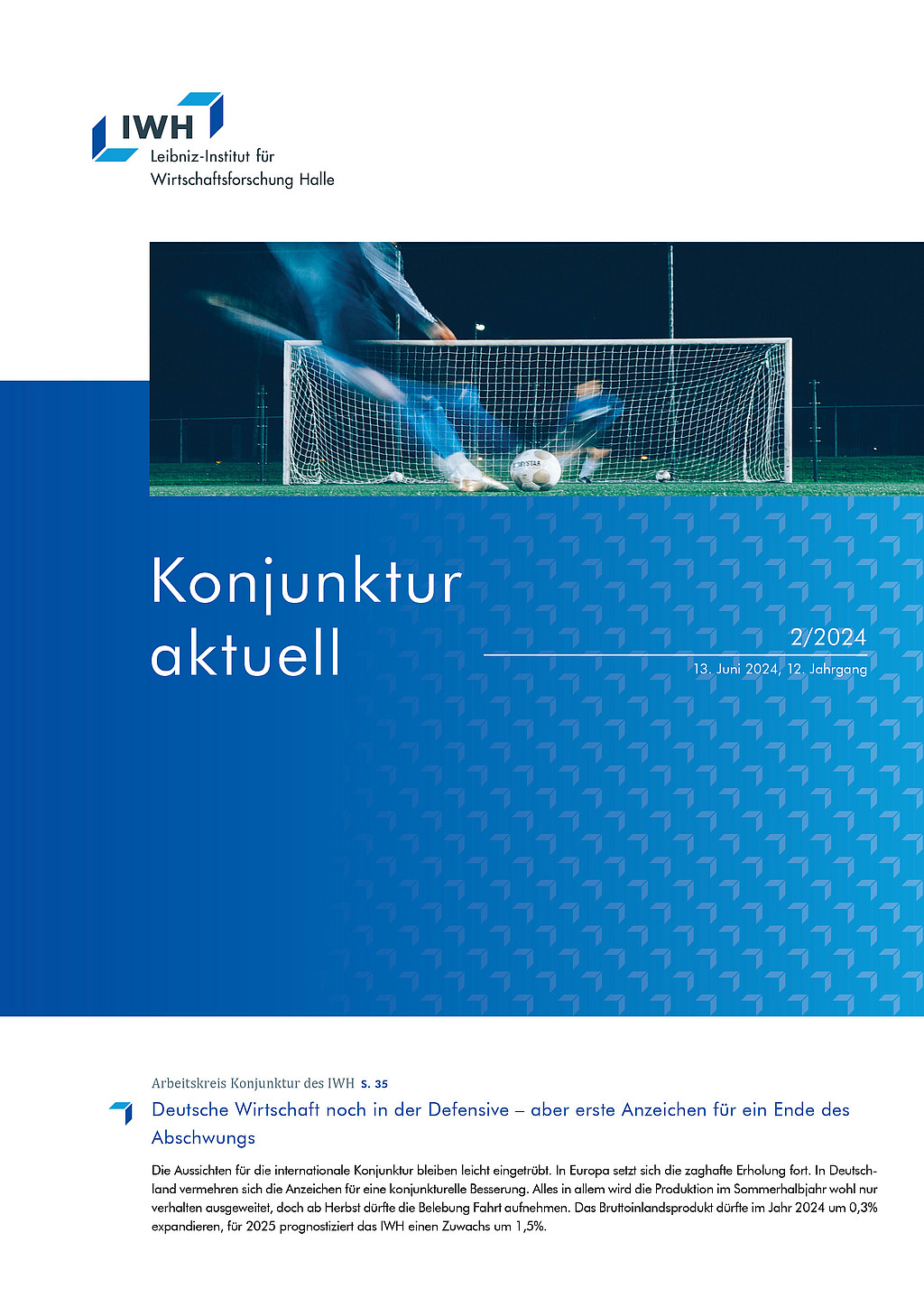German economy still on the defensive – but first signs of an end to the downturn

The global economy has been expanding at a moderate pace since the beginning of last year. However, the inflation target of 2% is increasingly out of reach in the USA, and the US Federal Reserve is unlikely to lower its key interest rate in the summer, contrary to what the financial markets expected at the beginning of the year. The revision of key interest rate expectations, especially but not only for the USA, caused capital market interest rates to rise again in the first half of 2024. In contrast, Chinese economic policy has stepped up its efforts to contain the real estate crisis in China, and recent surveys suggest an improvement in the global business climate in early summer. Still the outlook for the international economy remains slightly clouded by the relatively high interest rates and a rather restrictive fiscal policy in the advanced economies. Overall, the moderate pace of expansion in the global economy is expected to weaken slightly.
In Germany, production, following a decline in the final quarter of 2023, expanded slightly in the first quarter of 2024, thanks to somewhat stronger exports and a temporary increase in construction output. Private consumption, on the other hand, shrank. Presumably, many one-off inflation compensation payments have initially largely been saved. In the coming quarters, further real increases in wage income will cause private consumption to increase. Due to the weak economy, however, the number of people in employment is likely to fall slightly in the coming months. “Production will expand only modestly during summer. The European Football Championship does nothing to change this,” says Oliver Holtemöller, head of the Macroeconomics Department and vice president at the IWH. The income generated by football fans from home and abroad is offset by crowding-out and substitution effects elsewhere, so that the bottom line is that there is no economic stimulus. Nevertheless, the recent significant rise in the expectations component of the ifo business climate indicates that the German economy is on course for recovery. “With modestly rising exports, the recovery is likely to pick up speed from the autumn,” says Oliver Holtemöller. Consumer price inflation is likely to be 2.3% in 2024, with a noticeable fall only towards the end of the year as the strong wage increases are partly passed on over the summer. The unemployment rate is expected to be 6.1% in both 2024 and the coming year, compared to 5.7% in the previous year. The general government budget balance is likely to amount to ‒1.4% in relation to gross domestic product in 2024 and ‒1.3% in 2025.
“One risk for the international economy and the German economy in particular, is the possibility of a rapid fragmentation of the global economy,” the economist says. It is currently widely expected that the European Commission will impose punitive tariffs on subsidised Chinese products in the summer and that China will respond with tariff increases of its own. Companies in the automotive industry, for example, would strongly be affected, including through European tariffs on vehicles produced in China by German companies for the European market. Under such conditions, the chances of German exports expanding would be poor. It is doubtful whether an economic recovery in Germany could take place without foreign trade stimulus.
The extended version of this forecast contains three boxes (all in German):
Box 2: On the estimation of potential output
Publication:
Drygalla, Andrej; Exß, Franziska; Heinisch, Katja; Holtemöller, Oliver; Kämpfe, Martina; Kozyrev, Boris; Lindner, Axel; Mukherjee, Sukanya; Sardone, Alessandro; Schult, Christoph; Schultz, Birgit; Zeddies, Götz: Konjunktur aktuell: Deutsche Wirtschaft noch in der Defensive – aber erste Anzeichen für ein Ende des Abschwungs. IWH, Konjunktur aktuell, Jg. 12 (2), 2024. Halle (Saale) 2024.
Whom to contact
For Researchers

Vice President Department Head
If you have any further questions please contact me.
+49 345 7753-800 Request per E-MailFor Journalists

Head of Public Relations
If you have any further questions please contact me.
+49 345 7753-765 Request per E-MailIWH list of experts
The IWH list of experts provides an overview of IWH research topics and the researchers and scientists in these areas. The relevant experts for the topics listed there can be reached for questions as usual through the IWH Press Office.
Related Publications

Konjunktur aktuell: Deutsche Wirtschaft noch in der Defensive – aber erste Anzeichen für ein Ende des Abschwungs
in: Konjunktur aktuell, 2, 2024
Abstract
<p>Die Aussichten für die internationale Konjunktur bleiben leicht eingetrübt. In Europa setzt sich die zaghafte Erholung fort. In Deutschland vermehren sich die Anzeichen für eine konjunkturelle Besserung. Alles in allem wird die Produktion im Sommerhalbjahr wohl nur verhalten ausgeweitet, doch ab Herbst dürfte die Belebung Fahrt aufnehmen. Das Bruttoinlandsprodukt dürfte im Jahr 2024 um 0,3% expandieren, für 2025 prognostiziert das IWH einen Zuwachs um 1,5%.</p>



